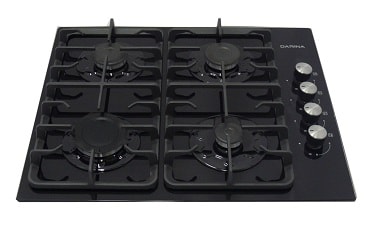 Hob every year more and more in demand among housewives. Connecting a hob is much more difficult than connecting a conventional hob. Therefore, people often search the Internet for information on how to properly connect the hob with their own hands.
Hob every year more and more in demand among housewives. Connecting a hob is much more difficult than connecting a conventional hob. Therefore, people often search the Internet for information on how to properly connect the hob with their own hands.
How to connect a hob of any type - electric, gas, combined - with your own hands. Instructions and wiring diagram for the hob for amateurs.
Types and advantages of hobs
- Gas.
- Electrical.
- Combined.
Gas panels are usually installed in gasified rooms. With such devices during operation rarely there are problems. For example, Bosch gas hobs are easy to use and perfect for both daily cooking and gourmet meals for special occasions.
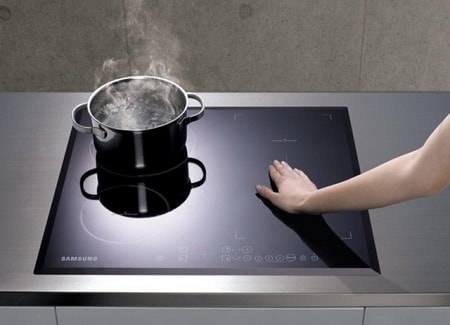
Recently, Bosch electric hobs have become increasingly popular due to the fact that the surface heats up almost instantly to the desired temperature, and from an aesthetic point of view, electric panels look better than gas ones.
Combined hobs combine all the advantages of the first two types: you can use both gas burners and electric surfaces. Each type has its own special connection scheme.
Advice:
Read also: How to install a hob in a countertop
Connecting an electric hob
Before you connect the hob to the mains, you need to know its power. Modern electric hobs consume a lot of electricity (up to 7 kW), so it is important to adequately assess the condition of the electrical wiring in order to avoid both device breakdown and accidental fire due to a breakdown in the power network.
Electric hobs are of two types:
- standard (with a conventional metal disk);
- induction (they only heat the surface on which the dishes are standing).
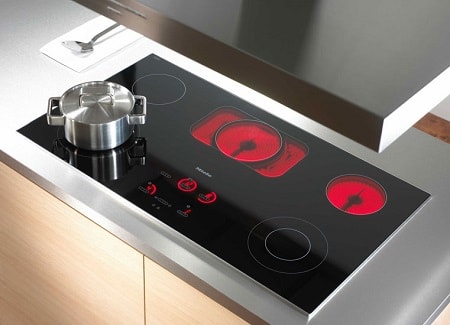
Despite the different principle of operation, the connection of electric hobs occurs according to the same principle. It is not at all necessary to call the wizard to connect the hob. If you strictly follow the attached instructions, connecting an electric panel yourself will not be difficult even for lay people.
Preparatory work
In order to save space, it is customary to integrate an electric panel into the countertop of a kitchen unit.To do this, in the place of planned placement, you need to cut a rectangle of the appropriate size with a jigsaw and build the hob there.
Most people choose the traditional cable-plug-socket connection of the panel. However, electricians recommend running a separate wire, specially selected for the power of the device, directly into the junction box.
Advice:
Read also: How to repair the hob yourself
Electrical panel connection diagram
The standard terminal box of the hob, in particular the Bosch hob, even though induction, even electric, has six contacts (ground, three phase - L1, L2, L3, two zero - N1, N2 and ground wire - PE). A conventional three-core electrical wiring cable used in networks with a voltage of 220 V is connected in this way. A phase conductor (usually red, brown or gray) is connected to one of the first three contacts L1-L3 (pre-connected by jumpers). The fourth and fifth pins N1 and N2 are also jumpered, and the neutral wire (usually blue) is attached to them. And the third cable core (yellow-green, yellow) is connected to the grounding connector marked with a special PE icon.
In networks with a voltage of 380 volts, as a rule, a five-core wire is used. In this case, you need to remove the jumpers from the first three contacts of the terminal box and connect three phase wires to them. Neutral and earth conductors are mounted in the same way as in the case of a three-core cable. Using such a circuit, it is possible to effectively distribute the voltage, protecting itself from electric shock and possible ignition of the wiring.
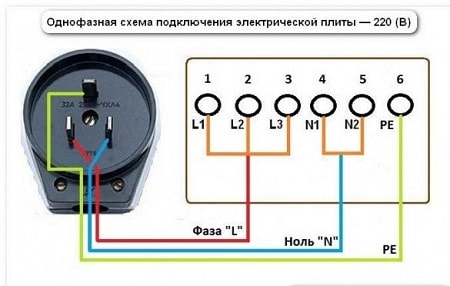
Another option is to connect the induction and electric hob to the outlet. In a standard outlet, the ground is typically centered on the other two pins. Then the voltage indicator determines the phase and zero connector (you can use the simplest screwdriver tester: the light is on - phase, off - zero). Assemble the plug and attach the wires to the terminals, as in the above examples.
Thus, it is a snap to connect an electrical surface yourself. It is enough to understand the simplest principles of electricity and take a responsible approach to business.
Gas hob connection
A gas hob, like an electric hob, is also built into the countertop, having previously sawed a rectangle of the required size with a jigsaw. It is recommended to leave a gap between the plate and the wall of about 5-6 cm for the convenience of laying auxiliary communications.
Then you need to select the jets of the appropriate diameter. If you have a centralized gas supply, you will need some jets, if a cylinder is installed, others. The twisting is done with a gas wrench, after which the corner adapter is screwed on. Since almost all hobs are equipped with an electric ignition system, you will need a flexible protective tube for the cable responsible for this function.
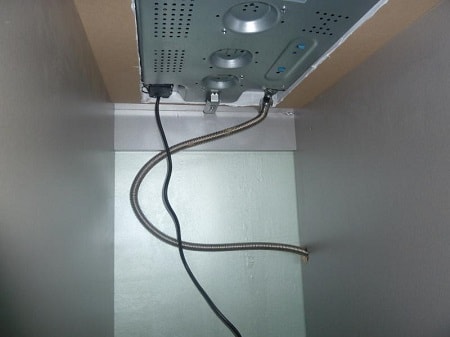
After completing the above operations, the hob is inserted into the cut out rectangle and fixed below on special supports. From above, the gaps between the tabletop and the panel are filled with sealant or other sealant. Then the previously installed angle adapter and the outlet from the gas pipe or cylinder are connected with a flexible corrugated hose, certified by the gas service specialists.
Important:
All work on connecting the central gas supply pipe with a gas hob must be carried out by the specialists of the gas service of your management company.
The connection of the combined type hob is carried out on the basis of the same principles that are used for connecting electric and gas hobs. Do not neglect safety precautions, strictly follow the instructions - then you can independently and, most importantly, connect the hob with high quality.

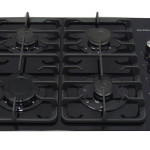
I changed the old Zanusi cooking stove for a new one. The new stove has four wires, not three as in the old one. connected by color (blue, yellow, brown). There is one black left, I don’t know where to connect it. Without it, the cooker works. It gives an error all the time, one phase is not connected